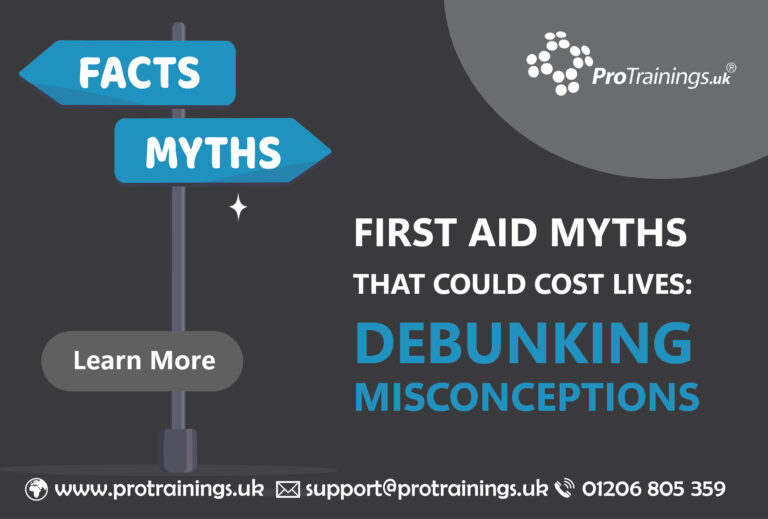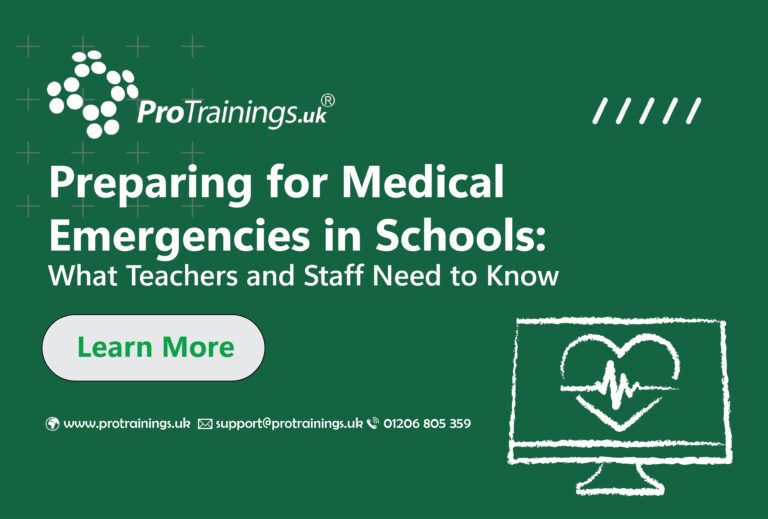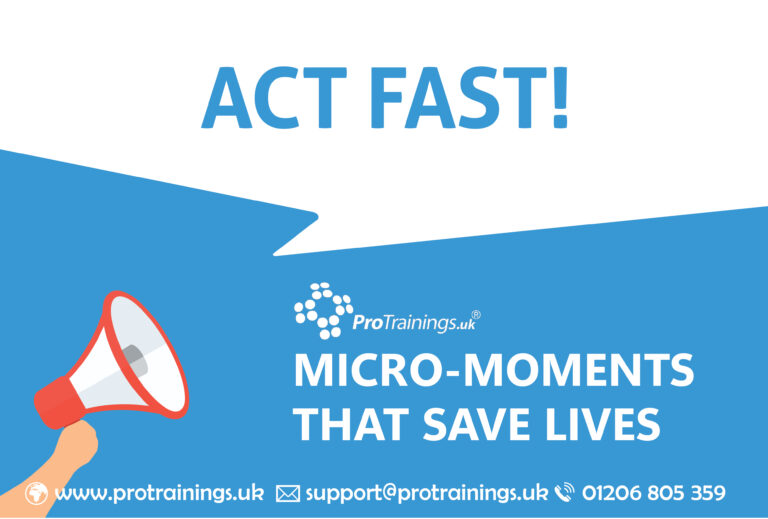Serious bleeding
Bleeding can occur from various parts of the body in the case of injury. This can not only be life-threatening but also very distressing for the patient and even for the first aider. When you have to deal with a bleed, keep calm and trust your training. It often looks a lot worse than it actually is. With all types of bleeding, as with other first aid care, we must make sure we always have our gloves on.
The first part of controlling serious bleeding is the use of direct pressure. This can be the patient applying pressure over the wound or using your gloved hand. This stops some of the blood from leaving the body and it also assists in the clotting process, which is where the body produces fibrous threads to block the hole.
The first thing we do is apply direct pressure with your gloved hand and ideally a sterile gauze pad over the wound. You can ask the patient to do this as soon as you arrive, which will give you more time to put your gloves on.
Sit them down or lay them down, whichever is more comfortable for them, just in case they faint, as there is less distance to fall and hurt themselves. If serious, you can ask a bystander to call for an ambulance, or if alone, you can do this after the dressings are in place.
The dressing is applied distally, which means furthest away from the heart, and then towards the body. The reason for this is to avoid forcing blood past the injury site.
Apply the dressing with enough pressure to stop bleeding, but not too much pressure to cut off circulation. If blood comes through the first dressing, apply another one. If blood comes through the second dressing, remove both dressings, re-check the wound, and apply another dressing, making sure that you are covering the bleeding site. Dressings can hold a lot of blood, so if you are at this stage, it’s a serious bleed and you need medical help as soon as possible.
Once the bleed is stable, you can put the arm in a sling. Once the dressing is on, check the circulation by squeezing a fingertip to check for a capillary refill.
We have talked about putting a dressing on an arm, but the same applies to any other cut. If it’s a cut to the body, you can use direct pressure using a dressing pad until the bleeding is controlled, or you may be able to bandage it in place.
Finally, in all cases of serious bleeding, shock is a concern so if they are going into shock, lay them down and elevate their legs if possible.




